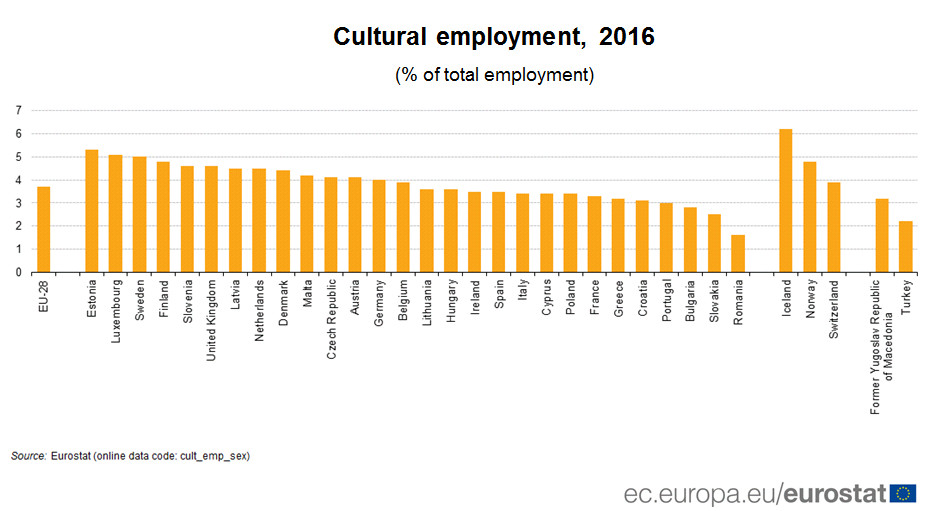 Between 2011 and 2016 the number of people working in the area of culture grew steadily, with 549 000 more jobs (+7 %) in the EU in 2016 than in 2011. In 2016, around 8.4 million people were employed in a cultural sector or occupation in the European Union (EU), accounting for 3.7 % of the total number of persons employed.
Between 2011 and 2016 the number of people working in the area of culture grew steadily, with 549 000 more jobs (+7 %) in the EU in 2016 than in 2011. In 2016, around 8.4 million people were employed in a cultural sector or occupation in the European Union (EU), accounting for 3.7 % of the total number of persons employed.
Almost 2 million of those employed were artists and writers, of whom nearly half (48 %) were self-employed. This is a much higher share of self-employed than that reported for total employment (15 %).
The level of education of those employed in a cultural area stands out. Almost 60 % of people working in culture in the EU had a tertiary education, compared with 34 % in total employment.
Highest share of cultural employment in Estonia, lowest in Romania
At Member State level, the highest shares of cultural employment were observed in Estonia (5.3 %), ahead of Luxembourg (5.1 %) and Sweden (5.0 %). At the other end of the scale, the lowest share was observed in Romania (1.6 %), followed by Slovakia (2.5 %) and Bulgaria (2.8 %).
A Statistics Explained article gives a more detailed analysis where you can see breakdowns such as age, gender and educational attainment. This article also includes a short section on the characteristics of certain cultural occupations (artists and writers).
For more information please contact us: estat-user-support@ec.europa.eu.


